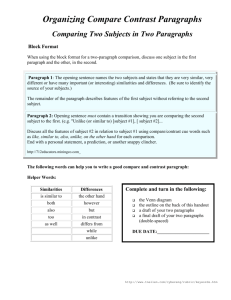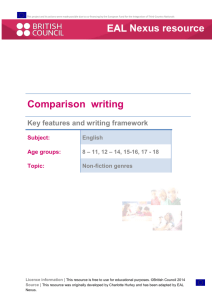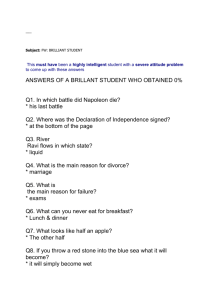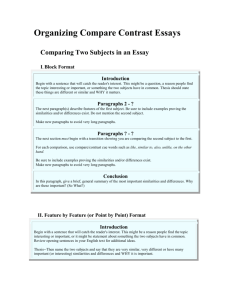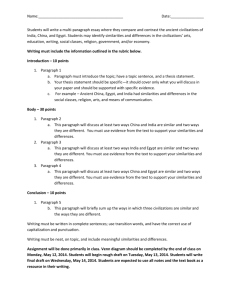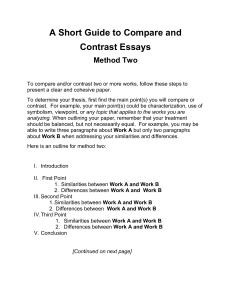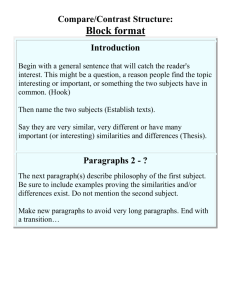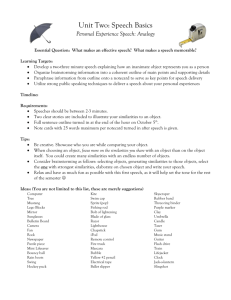Compare and Contrast Paragraph
advertisement
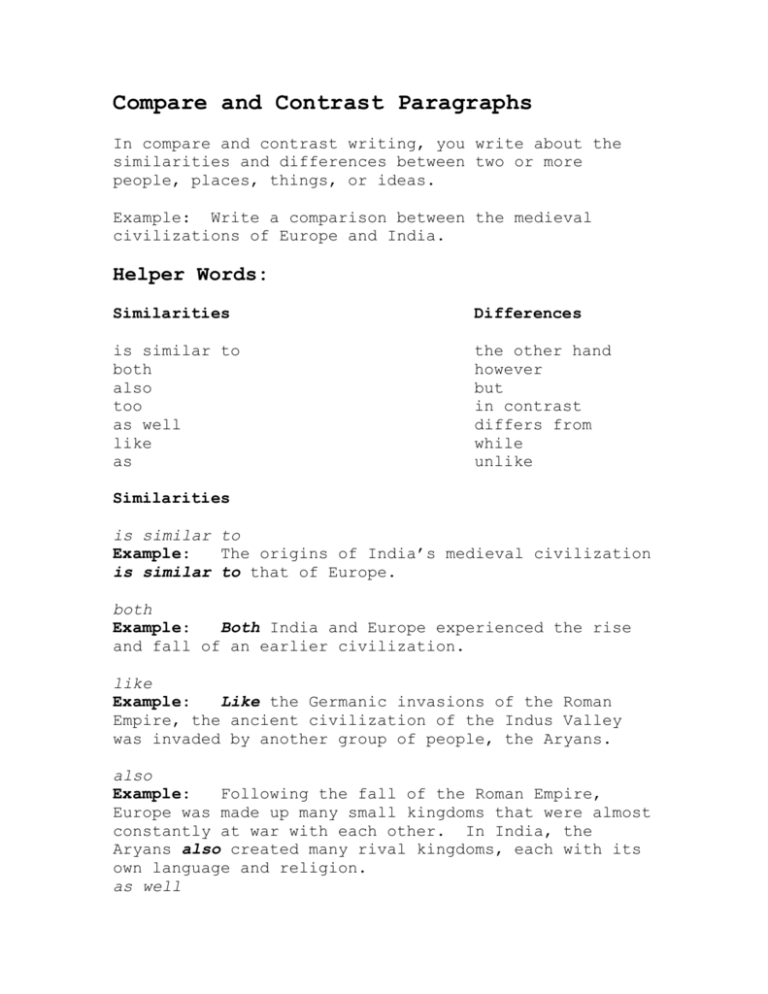
Compare and Contrast Paragraphs In compare and contrast writing, you write about the similarities and differences between two or more people, places, things, or ideas. Example: Write a comparison between the medieval civilizations of Europe and India. Helper Words: Similarities Differences is similar to both also too as well like as the other hand however but in contrast differs from while unlike Similarities is similar to Example: The origins of India’s medieval civilization is similar to that of Europe. both Example: Both India and Europe experienced the rise and fall of an earlier civilization. like Example: Like the Germanic invasions of the Roman Empire, the ancient civilization of the Indus Valley was invaded by another group of people, the Aryans. also Example: Following the fall of the Roman Empire, Europe was made up many small kingdoms that were almost constantly at war with each other. In India, the Aryans also created many rival kingdoms, each with its own language and religion. as well Example: After the rise of Islam, armies of Muslims invade Europe and conquered Spain. India, as well, was invaded by Muslim armies in 1025. Differences on the other hand Example: Most of Europe’s population was Catholic throughout the Middle Ages. India’s major religion, on the other hand, was Hinduism. however Example: Christian in Europe believed in only one God. Hindus in India, however, believed in many gods. unlike Example: Unlike other world religions such as Islam and Christianity, Hinduism has no founder. in contrast to Example: In contrast to the persecutions of Jews and heretics by the Catholic rulers of Europe, the Muslim rulers of India’s Mogul Empire practiced religious tolerance and allowed Hindus to serve as government officials. differs from Example: India’s climate differs from Europe’s by having a monsoon season. while Example: While it was possible (although difficult) for people in Europe to rise above their social status, India’s caste system was so restrictive that marriage and even socializing between castes was forbidden. When writing a multi-paragraph comparison, there are two primary methods of organizing your ideas. I. Block Format When using the block format for a two-paragraph comparison, discuss one subject in the first paragraph and the other, in the second. Paragraph 1: Opening sentence names the two subjects and states that they are very similar, very different or have many important (or interesting) similarities and differences. The remainder of the paragraph describes features of the first subject without referring to the second subject. Paragraph 2: Opening sentence must contain a transition showing you are comparing the second subject to the first. (e.g. "Unlike (or similar to) [subject #1], [ subject #2]...) Discuss all the features of subject #2 in relation to subject #1 using compare/contrast cue words words such as like, similar to, also, unlike, on the other hand for each comparison. End with a personal statement, a prediction, or another snappy clincher. The following words can help you to write a good compare and contrast paragraph: Eg: Compare Apples to Oranges using block format Apples and oranges have many interesting similarities and differences. Apples are a fruit that grows on trees in the temperate regions of the world. Apples have a thin smooth skin that is usually red, but can also be green or yellow. The inside of an apple is crisp and sweet and has a core where the seeds are located. Apples can be used to make juice, pies, or other delicious deserts. Even though oranges are also a fruit that grow on trees, they are different from apples because they are tropical and only grow in warm climates. Unlike apples, oranges have a thick skin that must be peeled before eating and they have seeds throughout the meat of the fruit, which is also stringy and grows in segments. Oranges have more juice than apples and the juice is more acidic so it is not as sweet as apple juice. II. Feature by Feature (or Point by Point) Format Introduction Begin with a sentence that names the two subjects and says that they are very similar, very different or have many important (or interesting) similarities and differences. (E.g.: While the political and economic systems of Japan and Europe are very similar, there are many important cultural differences.) Discuss how both subjects compare on feature one (E.g.: the political structure). For each comparison, use compare/contrast cue words such as like, similar to, also, unlike, on the other hand. Be sure to include examples proving the similarities and/or differences exist. Paragraph 2 Transitions beginning each paragraph are made by repeating ideas, phrases or words. (E.g.: The similarities between Japan and Europe are not the only found in their political structure, their economic systems are also similar.) Without transitions, the composition will sound choppy and disjointed. Continue the pattern set in paragraph 2 discussing a new feature in each new paragraph. For each comparison, use compare/contrast cue words such as like, similar to, also, unlike, on the other hand. Be sure to include examples proving the similarities and/or differences exist. Conclusion Be sure to end with a brief, general summary of the most important similarities and differences.
